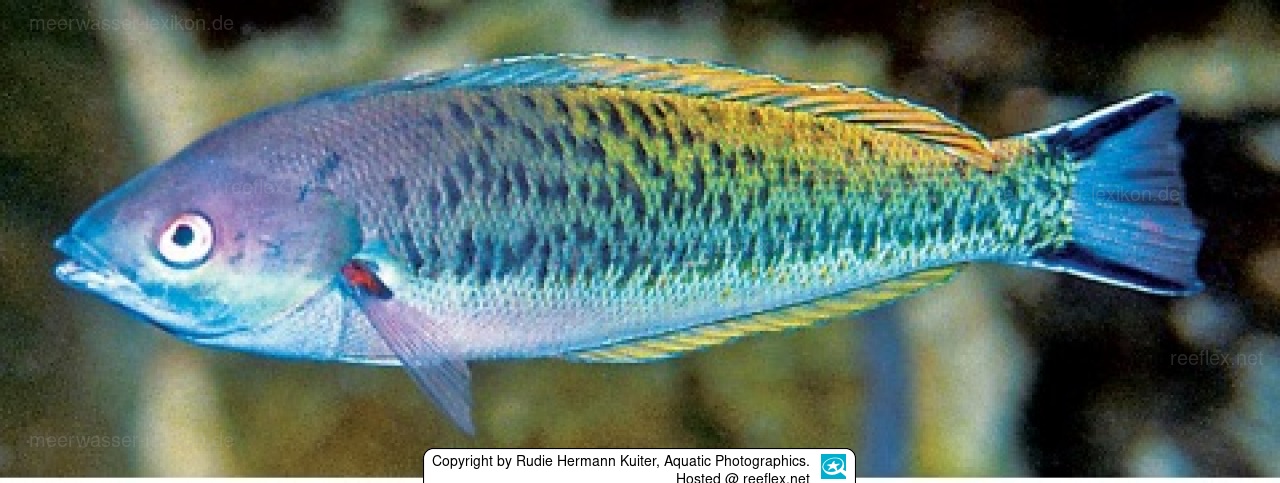Info
Pseudocoris hemichrysos Randall, Connell & Victor, 2015
The first description of this new wrasse is from 2015, photos of males in terminal phase are shown there.
All animals show an elongated yellow color stripe from the dorsal fin to the base of the caudal fin, the ventral sides are white in one male, in another male a light blue.
Exact occurrences are known only from a few areas (Maldives, Mauritius and the Mascarenes, the authors assume that this wrasse species will be widespread in the Indian and western Indian Ocean. These fish are extremely agile and shy, which is why there are few photos of them so far.
Diver and image originator Alan Sutton has managed to get photos from Tanzania. He has received a personal confirmation from Benjamin Victor (has described species) that his photos show Pseudocoris hemichrysos. Thus now also occurrences from Tanzania are considered as secured.
Jumping guard
A jumping guard prevents (nocturnal) fish from jumping out.
Wrasses, blennies, hawkfishs and gobies jump out of an unprotected tank in fright if their night rest is disturbed, unfortunately these jumpers are found dried up in the morning on carpets, glass edges or later behind the tank.
https://www.korallenriff.de/en/article/1925_5_Jump_Protection_Solutions_for_Fish_in_the_Aquarium__5_Net_Covers.html
A small night light also helps, as it provides the fish with a means of orientation in the dark!
The first description of this new wrasse is from 2015, photos of males in terminal phase are shown there.
All animals show an elongated yellow color stripe from the dorsal fin to the base of the caudal fin, the ventral sides are white in one male, in another male a light blue.
Exact occurrences are known only from a few areas (Maldives, Mauritius and the Mascarenes, the authors assume that this wrasse species will be widespread in the Indian and western Indian Ocean. These fish are extremely agile and shy, which is why there are few photos of them so far.
Diver and image originator Alan Sutton has managed to get photos from Tanzania. He has received a personal confirmation from Benjamin Victor (has described species) that his photos show Pseudocoris hemichrysos. Thus now also occurrences from Tanzania are considered as secured.
Jumping guard
A jumping guard prevents (nocturnal) fish from jumping out.
Wrasses, blennies, hawkfishs and gobies jump out of an unprotected tank in fright if their night rest is disturbed, unfortunately these jumpers are found dried up in the morning on carpets, glass edges or later behind the tank.
https://www.korallenriff.de/en/article/1925_5_Jump_Protection_Solutions_for_Fish_in_the_Aquarium__5_Net_Covers.html
A small night light also helps, as it provides the fish with a means of orientation in the dark!







 Rudie Hermann Kuiter, Aquatic Photographics, Australien
Rudie Hermann Kuiter, Aquatic Photographics, Australien
















